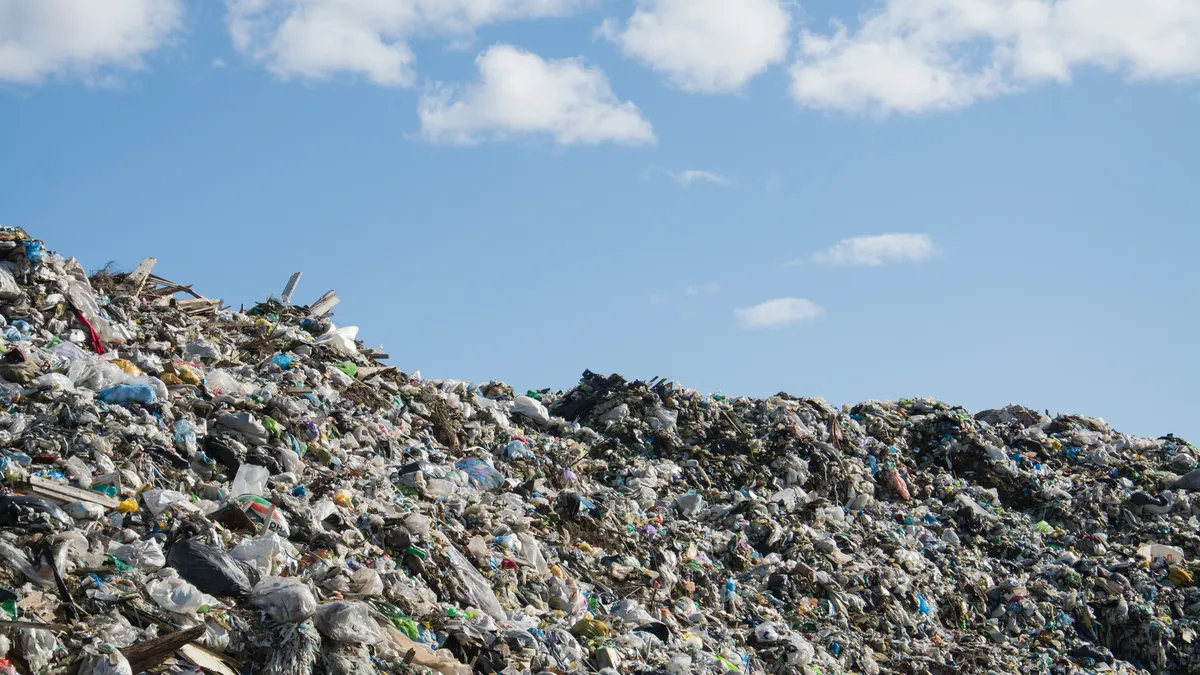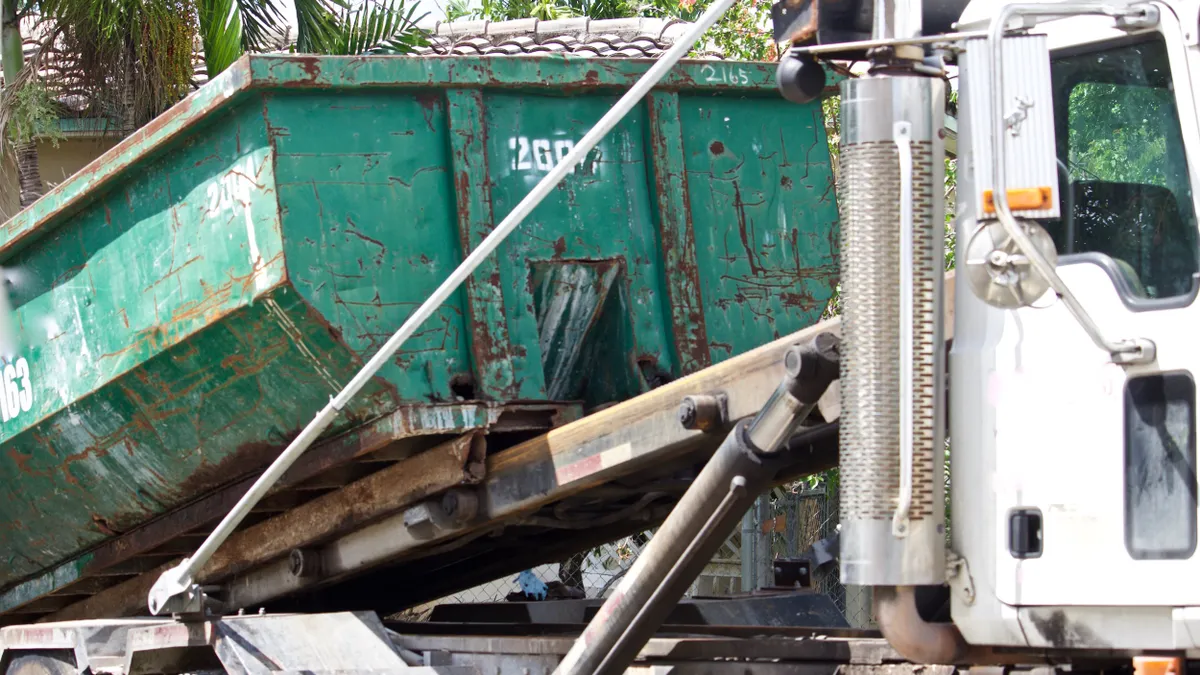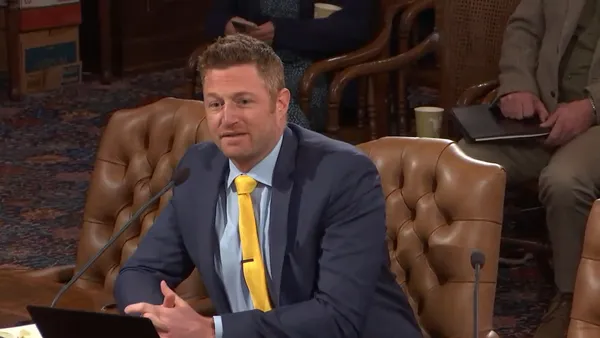Dive Brief:
- New York’s Department of Environmental Conservation held two public information sessions on Tuesday to collect feedback on a draft update to its solid waste regulations. The events included landfill and food waste regulations among other proposed updates.
- One proposed change would prohibit new or expanded landfills within 1,000 feet of schools or homes. Other changes clarify rules for complying with a new state organics diversion law, as well as the permitting obligations for some compost facilities.
- The draft revisions build off of solid waste regulations the state adopted in 2017 and are part of New York’s overarching climate action plan. The agency will accept written comments on the proposal through Aug. 24, officials said during the meeting.
Dive Insight:
New York adopted its ambitious Climate Act in 2019, an effort to reduce greenhouse gas emissions 40% from 1990 levels by 2030 and 85% by 2050. Updating the state’s solid waste regulations is a step toward reducing one of the “significant contributors” to greenhouse gas by restricting waste from entering landfills in the future, said DEC Commissioner Basil Seggos in a news release.
The draft changes are also meant to reduce confusion over how existing laws apply to solid waste entities, said Richard Clarkson, DEC’s assistant director of materials management, during the public hearing on Tuesday afternoon.
One significant update is a proposed siting requirement to prohibit new landfills, as well as “lateral and vertical expansions” of existing landfills, from being built within 1,000 feet of schools or homes. During the Tuesday public hearing, a representative from the environmental group Seneca Lake Guardian asked regulators to increase the distance to half a mile.
Yvonne Taylor, founder of the group, said stricter regulations are needed on landfill siting, in part, because of the Seneca Meadows Landfill, the state’s largest municipal solid waste landfill, which is a subsidiary of Waste Connections. The landfill is required to close by the end of 2025 per local law, but operators seek instead to add about 47 acres of new landfill liner and about 144 acres of overfilling operations, according to local news outlet Finger Lakes 1. Taylor said there are at least nine residences within 1,000 feet of the landfill.
According to DEC’s regulatory impact statement, enforcing a 1,000 limit could “limit the life” of eight New York landfills, which could lead to increased disposal and transportation costs for homes and municipalities in affected areas. Landfills could also lose an estimated $60-$80 per ton in tip fees due to “lost airspace,” the document said. It also projects higher costs related to a new requirements related to liners and gas collection systems for some types of landfill sites, such as those that take C&D, MSW combustor ash and waste from industrial operations.
Food waste provisions in the proposed update clarify how to comply with New York state’s new food donation and food scrap law enacted in January. The law requires most businesses and institutions to donate excess edible food if they generate two tons per week or more of wasted food each year. They must also recycle all remaining food scraps if they are within 25 miles of an organics recycler, such as a composting facility or anaerobic digester. Transfer facilities, municipal waste combustion facilities, and landfills must “ensure the separated food scraps reach the required organics recycler.”
New York City, which has a separate commercial organics diversion law based on business size instead of waste level, does not need to comply with the state law.
DEC’s proposed regulation updates clarify that combustion facilities must “take all reasonable precautions” to not accept food scraps from generators the law covers. Separately, many composting facilities in the state would also need to apply for a permit and submit a design and operations plan explaining any possible environmental impacts as well as storage requirements and ultimate end use for the compost.















